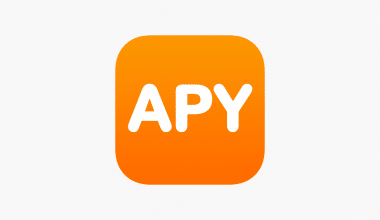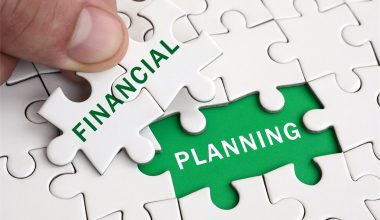Our focus includes financial literacy for kids, teaching kids about money, financial literacy for kindergarten, financial literacy activities for elementary kids, financial literacy for high school students, 3rd-grade financial literacy worksheet.
FINANCIAL LITERACY FOR KIDS
The statement financial literacy for kids can be understood as the ability of kids to effectively use and understand various financial skills like personal financial management, saving and spending, investing, and budgeting. A kid lacking these financial skills is called financial illiteracy in kids.
Kids need to be financially literate for a solid foundation for their saving of education, starting up a business or even running the business also retirement and using debt responsibly. When they have little or growing knowledge of these ideas. It is know known as financial literacy for kids.
Organizations are fast developing this is why it is important for kids to understand various credit products and how they are put in use like credit cards, mortgages, and student loans. Other important products too like health insurance and self-directed investment accounts are financial products kids need to be aware of.
The rate of financial illiteracy is fast rising in countries, that is why teaching these kids about money at an early stage is important to be in school and also at home. Parents should take charge of teaching their children about money not only for their own benefit but also to lead them away from the path of debt their elders have taken to.
In this post, we will discuss the basic financial lessons for each child at a range of ages. So as to influence their financial behavior as well as grow savers, givers, investors, and conscious consumers.
TEACHING KIDS ABOUT MONEY
Kids in every age limit have to learn about money and saving in their own little way. Parents should their kids with understanding lessons and setting activities to aid kids to understand finance in their own way.
Teaching kids about money is a step every family should set up for their kids early enough, so before they are of age, they are able to understand how to go about their finance and giving. We will discuss in this post different activities and lessons every parent should startup for their kids in a particular age range.
Age 3-5 years
Teaching kids within this age limit about money is important. Parents need to teach kids at this age the lesson that if they really need something, they would have to wait, save up and buy it. Kids should be made to understand that saving up for something you need is the way it should.
For a better understanding of this lesson, parents should buy three jars for kids within this age limit. Label the jars saving, spending or sharing, have he or she save up for a particular need like toy but not so expensive one so they can be able to afford it. They could spend their little savings on candies and stickers while they save for their need. However little allowances from parents would help to encourage them on saving. While the sharing jar would be put in use for any friend in need.
Another activity could be as simple as educating them to be patient in life to get what they want. While waiting for their turn on a swing would be a good time to teach and make them understand this lesson.
Age 6-10 years
When the first lesson is understood by a kid, parents and teachers need to teach kids within this age limit on how to spend their money. Choices on how and what to spend their money on are lessons for kids in this age bracket.
They still need to continue their saving, spending, and sharing lessons while moving on to the decisions of how to spend their money. Achieving this lesson, take your kids to the store say aloud your decisions in spending while you shop as well as ask for him or her opinions. This practice indirectly teaches the kid about money.
Say aloud decisions like do we really really need this product, can we get it cheaper at some other place, is a shop running a discount sale then we can get 2 instead of one.
Explain to your child why they need to go for a cheaper product that tastes the same as a brand product but the branded ones are costly, give in a small amount of money to spend in the supermarket and see how he or she goes about making decisions in his or her spending.
Age 11-13
At this age, a kid could move from short-term saves to saving for long-term items. Introduction to compound interest will be essential at this age for these kids. Let them understand interest on savings as well as past savings.
Let your child engage in compound interest calculations and see how much he or she will earn if she invests in a certain amount and it grows on a certain interest. Saving up money for long-term items might be a bit newer to him since he has been saving up for only short-term needs.
The desire for an item like an iPod will make her give up a certain temporary need for a bigger purpose which is the iPod. Enable your child to know the importance of starting savings early and also let them learn from individuals who have benefitted from using the compound interest.
Age 14-18 years
Parents start the topic of how a Child’s college would be like and as well put in their yearly contributions to their college funds by the Childs ninth grade.
Been honest at an early stage on what your family can afford will the child will enable him to make a better choice for their college. You can look into private schools that are generous with financial aid or government grants and scholarships even loans that will be beneficial for your child.
Parents should make their kids get a part-time job and even make them the sole person in discussing and comparing tuition for different colleges.
Age 18+
An average youth is always smooth in spending, so it’s really easy for him or her to hop into credit card debt. As a parent, you should advise your child on pilling up debit together with loans to pay up to themselves.
Also, another disadvantage to this credit card debt is the fact that it could affect your child’s credit card history which means buying a car or house or even get employment would be a hard one. So it’s really important parents teach their children how to be responsible with their credit cards.
Make your child understand that any credit card a parent cosigns automatically affects the parent’s credit history. In this case, parents should guide their children to get credit cards with low interest per annum.
Teach an 18+-year-old child how to budget its finance in order to save up for emergency savings. Emergencies are occurrences that are beyond our control so in order not to be taken unaware and disorganize our finance you should actually make provision for these occurrences.
FINANCIAL LITERACY FOR KINDERGARTEN
Financial literacy for kindergarten is a first to financial literacy for kids. Kids at the kindergarten stage are eligible to learn little things about finance as well as how to manage these finances. Kindergarten kids at this stage should learn about coins wants and needs as well as how to spend money.
Firstly your child should understand what money is and its value. Start with the money basics like introducing coins and bills. And helping her understand the ranks of these bills by letting her arrange your wallet sometimes. Start allowing your child to pay and receive changes for little transactions. Also, take her to banks for familiarity on the purpose of visiting banks and who works in a bank.
Secondly, parents help your child make money. They are ways a child could make petty money at home. If parents had the knowledge of these ways and could help them. A kid at kindergarten should start receiving allowances from their parents depending on their parent’s earnings.
It mustn’t be weekly allowances. But at least 2 weeks interval would help their account save as well as try soliciting their services. When your child does some extra work at home that isn’t theirs. You as a parent teaching a child to save money. Should solicit their service so they can be able to save. Including a lot of practical activities in teaching financial literacy for kindergarten is the best method.
Financial literacy for kindergarten will be the best implement through fun games. While adding little money facts that are fun and sometimes rhyming so they enjoy it. Literacy in finance for kindergarten students should also be implemented with patience. As the kids will find all of it new at first.
Lastly, start up a micro-business for your child. Like lemonade stand or a snack table even a hot apple juice cider stop. The business will help your kid earn money and also learn how to manage his or her money. This is the most important step in financial literacy for kindergarten. Because it is practical, so more fun.
Financial responsibility
Financial literacy for kindergarten may not be so much understanding for the child. But he or she will that money has value. When a child starts earning money no matter how little it is. It will definitely be exciting for him or her to save money and share as well. Meanwhile earning this money, kids must learn to be honest about their finances. As such, you as a parent need to be true to your finances as well.
Example when you need to make a difficult financial decision. Teach him or her or your reasons for your decision. As well as make the child understand that money is valuable but it isn’t loving or safe.
Financial literacy for kindergarten is the foundation of these kids to the knowledge of finance. Therefore, it should be taken seriously. Discuss making life choices with your kid then link them to making financial choices with their money. They should always go for a better choice or seek advice. Before making choices so they don’t end up making the wrong choices.
FINANCIAL LITERACY FOR ELEMENTARY KIDS
Whether in the classroom or at home financial literacy for elementary kids is important. Kids need knowledge of finance as well as a better understanding of finance for elementary kids. The practice of financial activities could be employed both at home and in school. To aid them to be familiar with financial dealings. Some of the financial activities elementary kids engage in for a better understanding of finance are our discussion here.
GAMES
Games and gaming ideas have always been a reliable method to teach kids about money. Especially teaching financial literacy to kids in the elementary stage. Interactive games are always a good source to arise their inquisition about money matters.
Some of the gaming ideas include: pie chart, pictures, and other digital materials or there are a lot of printables. That you can engage your child in. Like fill in the blank money activities and painting also coloring and matching even drawings. These are not just games. But also a good teacher of financial literacy to elementary kids.
They could also count coins in cupcake liners while each cupcake liner writes a different amount. Then your kid could fill them with the correct amount of change. You could as well set up a shop and create felt food pieces like ice cream, waffle cones, or cherries. Allow your kids to manage the affairs of receiving money and calculating change for the shop.
Lastly, you could use the gaming idea of money-filled eggs for your kids. Let your child find each of the hidden eggs and as well add up their winnings by themselves.
CLASSROOM ACTIVITIES
Teachers in school should know they are not left out in the training of these kids to be financially literate. They can as well be of great value by setting up some money activities in the class especially when they have understood the percent and multiplication concept.
Some of the ways to improve these kids in financial ways are by introducing career opportunities for your students so they could start early to make decisions. Also, teachers should integrate academics like math and science into PE games and budgeting lessons too.
Teach your students skills and help them make a choice of which to acquire and take upon. Use money-related words to teach like interest rate to teach multiplication. Classrooms are another avenue where kids in elementary school can gain financial literacy.
MONEY JARS
Money jars are already what they know and do basically as kids. If the parents had guided them through the journey of financial literacy. Basically, they should three jars for saving, spending, and sharing. As they get to elementary school this act is still relevant and should still be practiced.
Money jars are used for their labels. Are like saving is used for saving money so you could achieve a goal or buy a need. While the spending is for spending on petty things. Like candies and stickers. Then the sharing is for giving out mainly to those who need it like friends and neighbors. Money jar is a traditional form of financial literacy for elementary kids that all parents should engage.
FINANCIAL LITERACY FOR HIGH SCHOOL STUDENTS
High school students are older students in the secondary or for some schools lower secondary education level. These kids are halfway adults therefore they need all the money lessons they could get. Through teaching them financial literacy for high students.
If the high school students had begun their financial literacy journey just at the high school level. It would be a lot of hard work for them. But in a case, they had been taking little starts right from kindergarten. They would be more open to learn more about money as well as understand it well.
These students need to engage in activities so they understand money practically as well as practice these things taught to their own benefit. Which is called financial literacy for high school students. Some of the activities include:
GAMES
High school students and every other kid-like fun activities such as games. The best idea of teaching financial literacy to high school students is doing so while having fun because kids like having fun. However, fun shouldn’t be overemphasized so they don’t find this topic as unserious.
Games serve as fun financial literacy teachers to these students. And some of the games include payback, spent, financial soccer, STAX, shady Sam. Also the payoff, money magic, the uber game, hit the road financial adventure, and credit flash. Games are a good form of teaching financial literacy to high school students.
Presentations
Presentations are also an essential tool most teachers use in teaching financial literacy for high school students. The teacher shares important and interesting money topics like Making money. And Making personal financial decisions, Living on your own, Buying a home. Even Banking services, Credit, Credit card, and other financial matter that will be of value to them.
Students in the process of preparing for this presentation grab knowledge on financial matters as well as decisions to make. Discussions and shares of ideas make the presentation lively and fun while they learn. Financial literacy for high school students at this stage is it games or presentations. It doesn’t have to be fun always.
3rd GRADE FINANCIAL LITERACY WORKSHEET
The 3rd-grade financial literacy worksheet. Should contain activities kids like and would love to engage in. If it’s all boring they will easily get tired and at such lose interest. Meaning of 3rd-grade financial literacy worksheet is the list of activities for kids in the 3rd grade to again financial literacy all put together in a worksheet.
Look at some of the worksheets outlined for you below. And see how fun-filled they are meant to appear for kids to learn while having fun.
Teachers pay teachers 3rd grade financial literacy worksheet
The 3rd-grade financial literacy worksheet reflects as much fun. As possible including games so they don’t feel pressure or discomfort while grabbing little money lessons. Worksheet for 3rd grade on financial literacy. Are always similar because it contains as much fun as possible.
How do I teach basic financial literacy?
Start by discussing budgeting and money management with them. Describe the principles of credit, the significance of credit, and responsible credit card usage. Introduce the fundamental methods of investing money and emphasize the value of saving.
What is the first rule of financial literacy?
First, pay yourself. Set aside a manageable amount each month in accounts earmarked for long-term goals and unforeseen crises before paying bills and other financial responsibilities.
What is the rule of 72 in financial literacy?
It’s a simple approach to determine how long it will take for your money to grow by two times. Simply multiply the number 72 by the interest rate you intend to receive. You may use that figure to get an idea of how many years it will take for your investment to double.
What are the 6 standards of financial literacy?
Financial responsibility and decision-making, income and careers, planning and money management, credit and debt, risk management and insurance, and saving and investing are the six standards included in the Jump$tart brochure from 2007.
When should I start teaching my child financial literacy?
Money habits that last a lifetime start developing in preschool. Cambridge University behavioral scientists advise parents to begin educating their children about money as early as age 3.
What is financial literacy in simple words?
Financial literacy is the capacity to comprehend and use various financial abilities, such as saving, budgeting, and personal financial management, successfully. In order to achieve financial security, people must become self-sufficient thanks to financial literacy.
What’s the 50 30 20 budget rule?
The 50/30/20 rule is one of the most popular percentage-based budgets. Spending 50% of your money on requirements, 30% on wants, and 20% on savings is the general principle. Find out more about the 50/30/20 budget rule and decide if it applies to you.
Conclusion
Financial literacy for kids is an important topic that all parents and teachers should be serious with. The seriousness of teaching your kids this topic. Will not only better their finance but will also help reduce huge debit rates in the nation.






